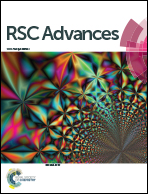Reduction-assisted sintering of micron-sized copper powders at low temperature by ethanol vapor
Abstract
The low temperature sintering of micron-sized Cu powders is achieved by ethanol vapor annealing. A Cu-pancake is formed and has enough mechanical strength to sustain the gravitational pull. The electrical resistivity of the Cu-pancake formed by flaky powders is lower than that by spheroidal ones because more contact area of the former facilitates the sintering process. The resistivity of the Cu-pancake grows with decreasing the annealing temperature but it is still about 10−3 Ω cm at 120 °C. The sintered Cu-pancake is characterized by X-ray diffraction and X-ray photoelectron spectroscopy to investigate the sintering mechanism. The low temperature sintering is attributed to the reduction of the native oxide on surfaces of Cu powders by the ethanol vapor. The reduced Cu is very active and tends to sinter with each other to lower the surface energy. This reduction-assisted sintering may be useful in the fabrication of conductive patterns on flexible substrates. The prepared Cu pattern on polyethylene naphthalate exhibits repeatable flexibility and acceptable conductivity.


 Please wait while we load your content...
Please wait while we load your content...